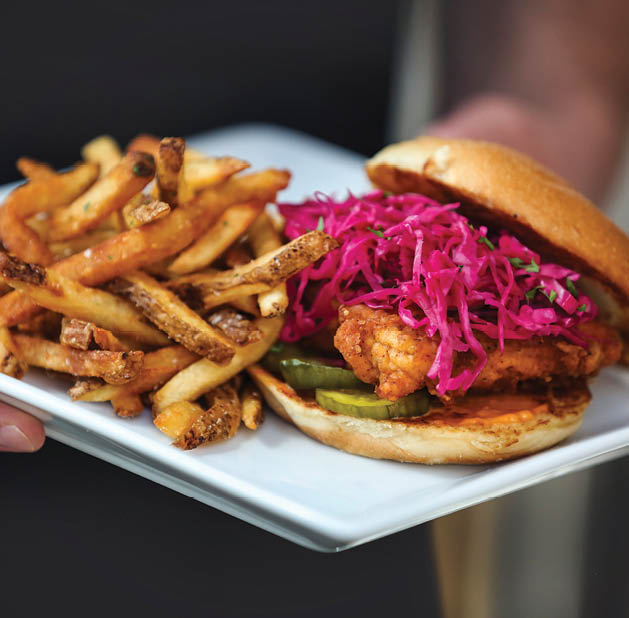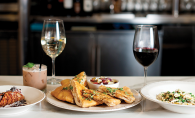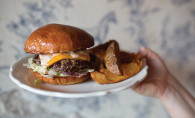When Black Dog Café opened in Lowertown in 1998, it was the only café or restaurant in the neighborhood. But as the neighborhood evolved over the years, Black Dog Café found the need to change, too, co-owner Sara Remke says.
What started as a café concept offering just coffee and wine turned into coffee, wine and sandwiches. “And we were the only ones here for so long that our kitchen kept kind of organically growing, but it was never exactly a kitchen,” Remke says. A kitchen that was required to vent up seven floors in a historical building—which wasn’t going to happen. “[The kitchen] was crowded and stressful,” she says. So when construction on the light rail started, they began looking for a new location so they could become the full restaurant they were bursting at the seams to be.
Then the Zen Center next door announced it was moving, and things became clear. “Why wouldn’t we do it there?” Remke recalls. So they bought the space next door, doubled their dining and event space, and were able to move the quasi-kitchen a few hundred feet over and become a full-fledged restaurant. “It just all sort of worked at the exact moment we wanted it to work,” she says. “Timing was everything.”
So after years of sandwiches, Black Dog Café now offers breakfast, lunch, dinner and a full bar. Chef David Perez heads the kitchen after three years at Meritage, and his experience is clear on the menu. “He makes his own pasta from scratch,” Remke says, and adds that Perez is having fun experimenting with entrée options like saltimbocca and steak frites.
“We are in the artists’ quadrant,” Remke says, so they’ve been working on how to “have their creativity and at the same time be something a little more accessible for the neighborhood,” which today has business people coming in for lunch and dinner.
With dinner, you can try something from their seasonal cocktail list or their cocktail of the day – always just $5. And don’t forget to stick around for the live music six nights a week, which has been integral to the Black Dog Café since its first year. Friday and Saturday nights, their biggest nights, are busy for that reason. “We have a lot of great music and it’s really nice to see that when people can actually have food and drink, we get a whole different crowd,” Remke says.
With all the change, Remke says there’s plenty that hasn’t changed. “We still want to be that place,” in the Lowertown arts district. “We want to feed people’s souls and we want to be a place where people enjoy themselves, and I think every different kind of person is welcome here,” she says. “I want us to reflect the world.”
Q&A with Chef Josh Brown of Market House by D’Amico
Market House at the Minnesota History Center is led by chef Josh Brown, who’s worked with culinary legends Wolfgang Puck and Jean-Georges Vongerichten, and previously led at Le Méridien in Minneapolis. We asked Brown what we can expect at the new Market House by D’Amico:
Q: Market House is inspired by the first St. Paul Public Market. Will the menu reflect the history of Minnesota?
A: As we were developing the menu, we [asked], What are traditional Minnesota ingredients? How do we put that into modern food? We definitely tie those in daily. Every week we get to feature our seasonal local ingredients in our salad bar [with items like] squash salads, beet salads, and wild rice salads.
Q: Are there unique menu items because of the connection to the History Center?
A: Being in the History Center, we get to create menus inspired by the exhibits. [One example is the gridiron glory burger featured alongside the football Hall of Fame exhibit last fall].
Q: What can we expect on the day-to-day menu?
A: One of my favorite foods is cheeseburgers; I’ll admit that openly. We have an awesome fried chicken sandwich. In the Twin Cities, there’s this constant battle over who has the best fried chicken sandwich. When I started, I wanted to do a Tennessee hot chicken sandwich, but we kind of backed off—made it Minnesota hot with pickled purple cabbage and chili mayonnaise.

(Courtesy of Market House by D’Amico)









